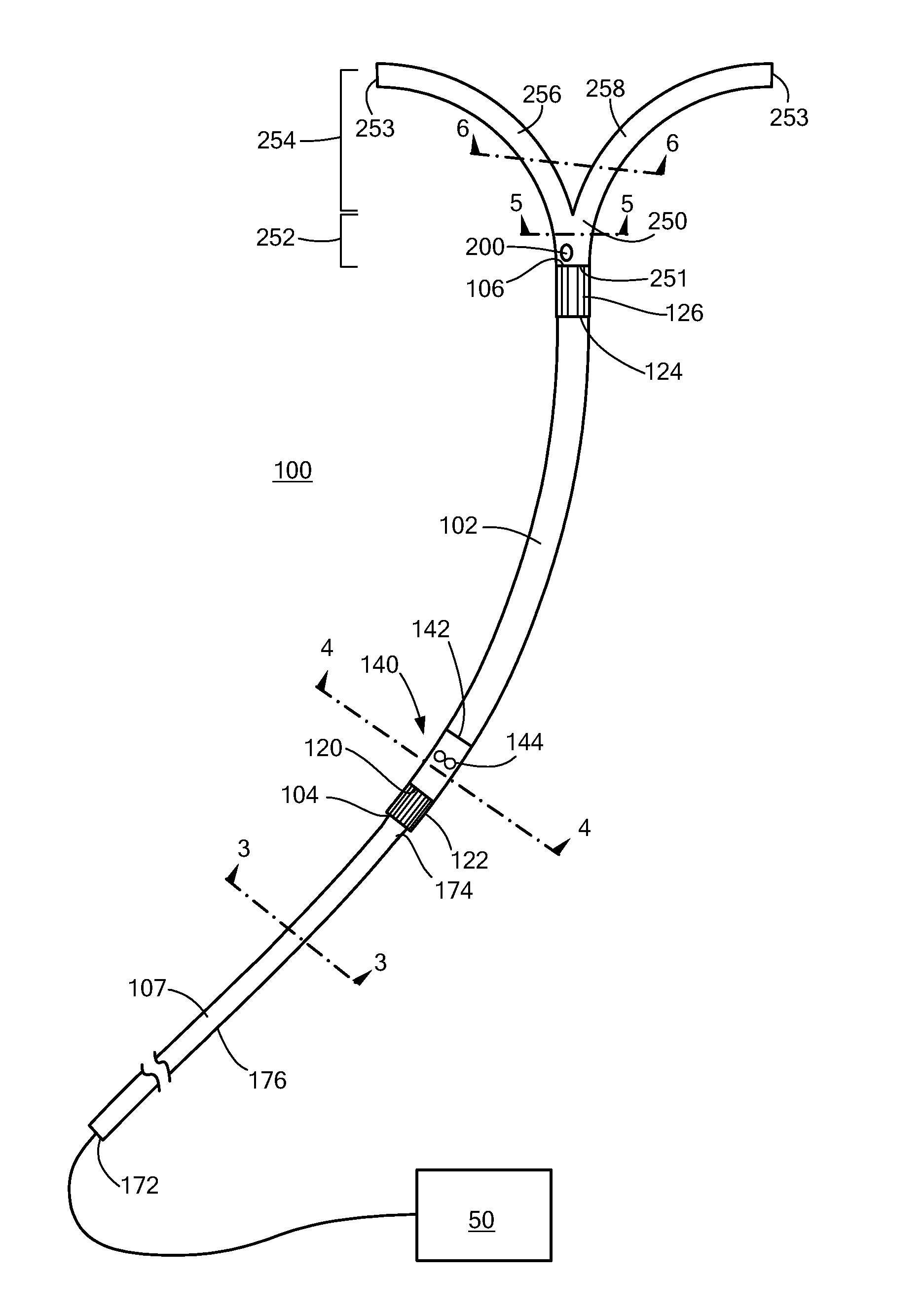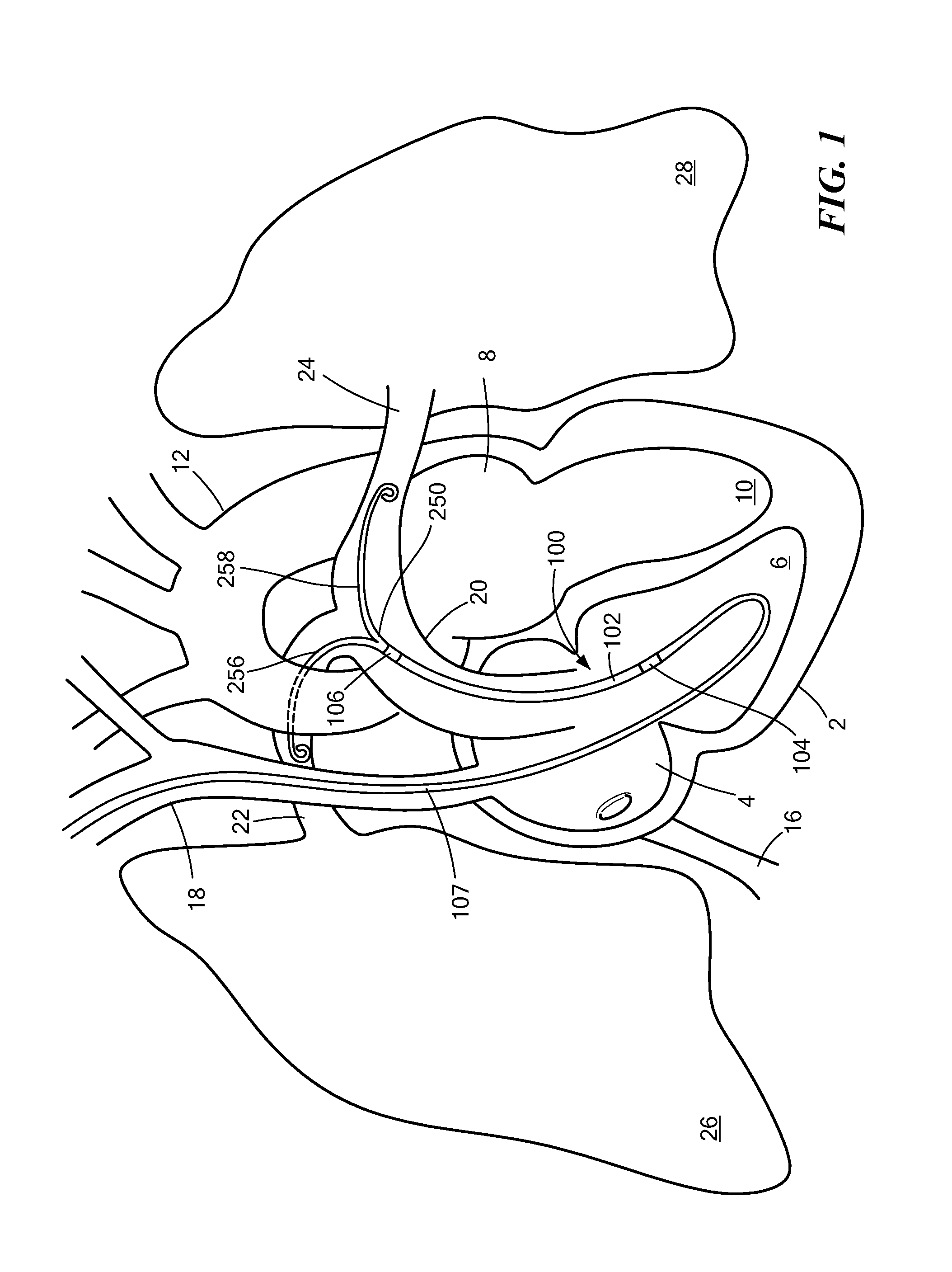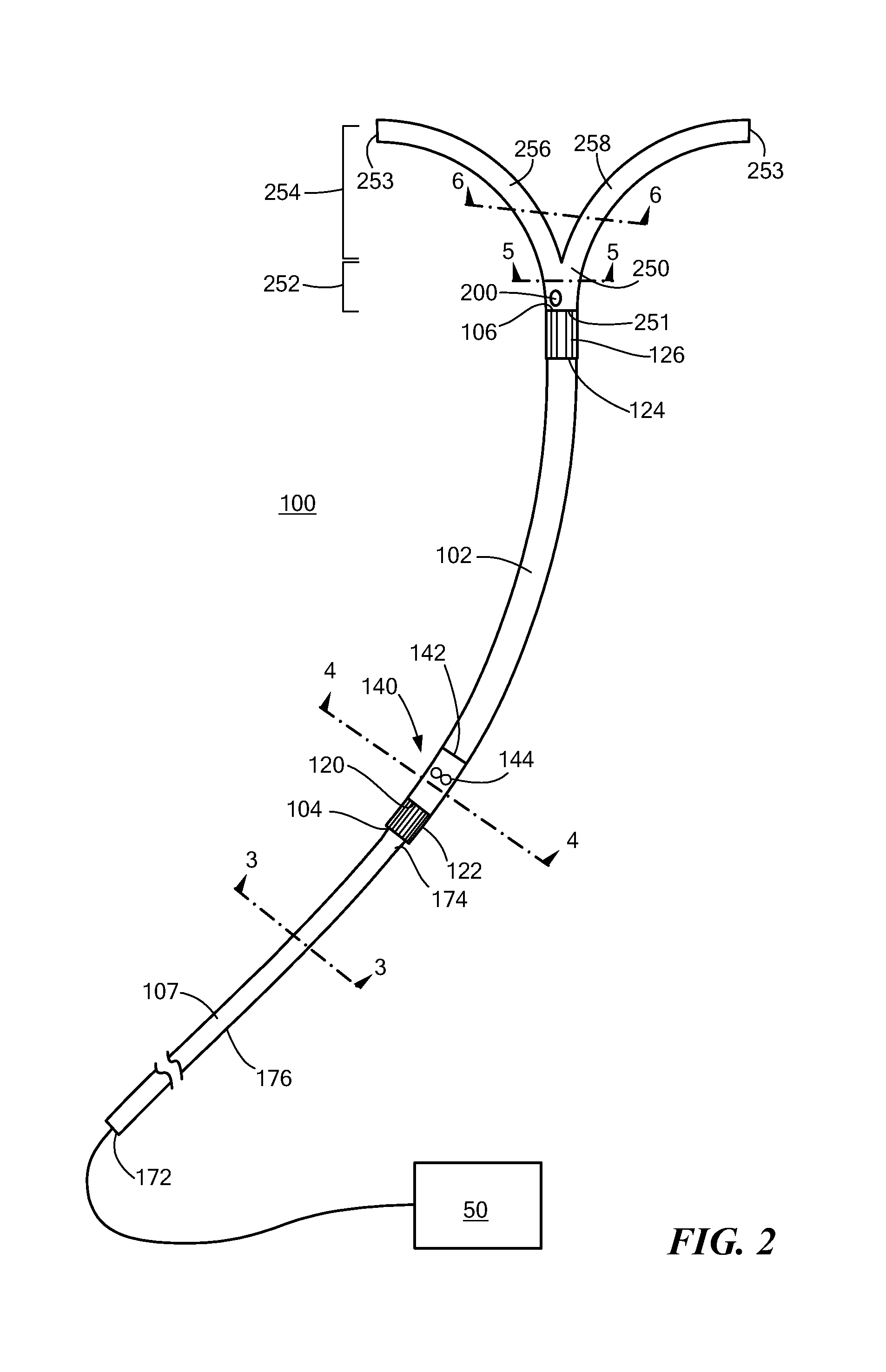Cannula with bifurcated tip for a cardiac assist device
a cardiac assist device and cannula technology, applied in the field of cannulas with bifurcated tips for cardiac assist devices, can solve the problems of limited mechanical support for rv infarction, harm to patients, and need more mechanical manipulation, so as to improve patient mobility, improve hemodynamic monitoring of heart function, and enhance the secure placement of the device
- Summary
- Abstract
- Description
- Claims
- Application Information
AI Technical Summary
Benefits of technology
Problems solved by technology
Method used
Image
Examples
Embodiment Construction
[0022]Referring now to FIGS. 1 and 2, a percutaneous cardiac assist device (pCAD) 100 may be positioned within a heart 2 so that an inlet end 104 of the device is located in the right ventricle 6 and the outlet end 106 is located in the main pulmonary artery 20. The pCAD 100 includes a fluid pump 140 supported within a flexible cylindrical cannula 102 that serves as a device housing. The pump 140 draws blood of the right ventricle 6 into the inlet end 104 of the cannula 102 and expels it from the outlet end 106 into the main pulmonary artery 20. The inlet and outlet ends 104, 106 of the cannula 102 are provided with wire cages 122, 126 that permit free flow of blood into or out from the respective end, while preventing damage to adjacent vessel tissues. The device 100 includes a catheter 170 that is joined to the inlet end 104 of the cannula 102, and a flexible bifurcated tip 250 that is disposed on the outlet end 106. The bifurcated tip 250 serves to secure placement of the device ...
PUM
 Login to View More
Login to View More Abstract
Description
Claims
Application Information
 Login to View More
Login to View More - R&D
- Intellectual Property
- Life Sciences
- Materials
- Tech Scout
- Unparalleled Data Quality
- Higher Quality Content
- 60% Fewer Hallucinations
Browse by: Latest US Patents, China's latest patents, Technical Efficacy Thesaurus, Application Domain, Technology Topic, Popular Technical Reports.
© 2025 PatSnap. All rights reserved.Legal|Privacy policy|Modern Slavery Act Transparency Statement|Sitemap|About US| Contact US: help@patsnap.com



